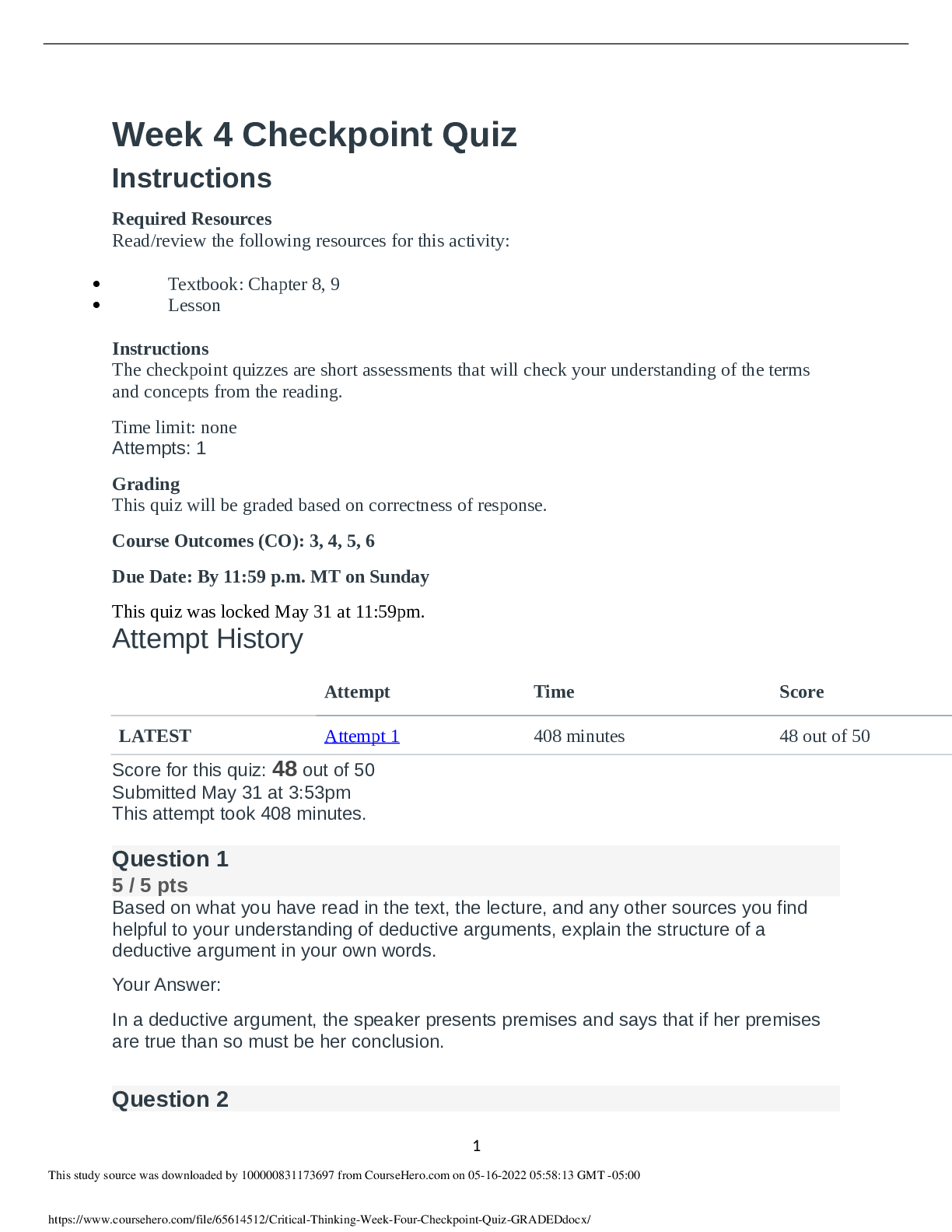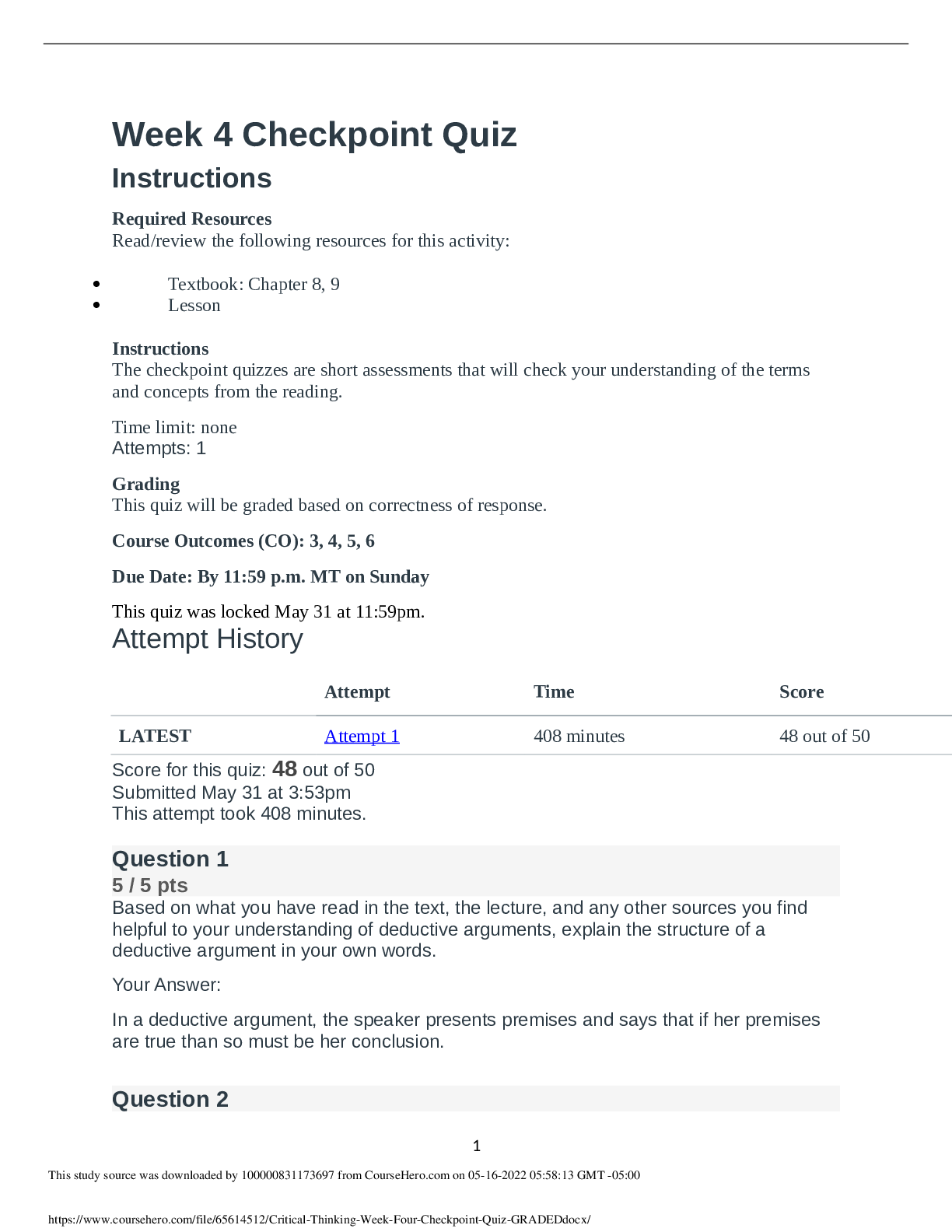1. Go to the box “Deductive Reasoning” (in the beginning of Chapter 8). Read the last
paragraph there. Based on that reading and any other sources you find helpful to your
understanding, describe the part that “rules, operating conditions, core beliefs, values,
policies, principles, procedures, and terminology” (p. 159) play in deductive arguments.
Question 3
2 / 2 pts
In the introduction to Chapter 8, the text sets forth a specific definition of the term “valid”
as it applies to deductive arguments. What is that definition?
Question 4
2 / 2 pts
Use the following template to create a valid Denying the Consequent argument
example:
If_________________ then _______________
It is not the case that ______________________
Therefore, it is not the case that ________________
Question 5
2 / 2 pts
Use the following template to create a valid Affirming the Antecedent argument
example:
If_______________ then____________ Therefore _______________________
Question 6
2 / 2 pts
Jack says: “I can enroll full time this semester, or I can buy a car. I think going to school
full time is the better option for me, so I’ll have to put off buying car.” What name does
the text give to this argument structure?
Question 7
5 / 5 pts
In addition to if/then and either/or, there are other terms that, when used correctly, can
create valid argument templates. Using the three deductive statements below, create
five (5) valid deductive arguments. To make your life easier, you can use the key words
at the end of the statement to fill in the template.
Statement A: Tuition increases 5 percent per academic year. (Tuition increases)
Statement B: I must graduate in no more than two years. (Graduate two years)
Statement C: I have legal access to unlimited amounts of cash. (Unlimited cash)
Example: For a template such as “Either A or B. Not A. Therefore B” you would
answer: “Either tuition increases, or I graduate in two years. Tuition will not increase.
Therefore, I will graduate in two years.” Do this for all five templates.
Templates
Either A, B, or C. Not C. So, A or B.
It is not the case that both A and B are true. So, either A is not true or B is not
true.
Neither B nor C is true. So, B is false.
B unless C. Not B. So, C.
A only if B. A. Therefore, B.
Check the Logical Strength of each argument you have written. If it lacks logical
strength, check the table Grammatically Equivalent Structures (in Chapter 8) to be sure
you are interpreting the words correctly.
Read More


